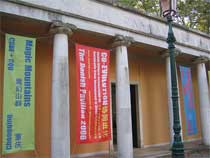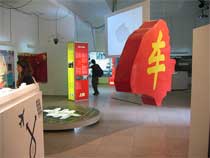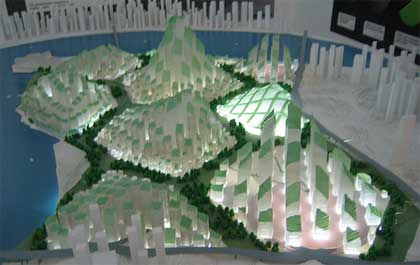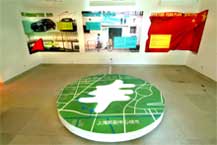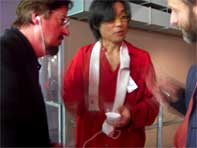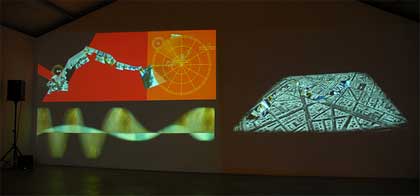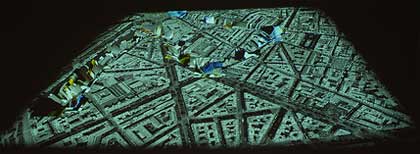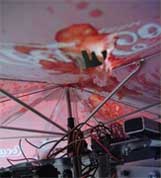From the iCommons blog:  There are a number of trailblazing authors that challenge the publishing industry’s control by managing the roles of printing, marketing and distribution of their own works, discovering new inroads into printing and marketing, and using the internet as a weapon of mass dissemination. These individuals are attempting, word by word, to improvise their way towards a new status quo in the publishing industry. These authors are not content with a business model that requires them to relinquish the rights to their work, or one that encourages them to agree to diminished control and limited financial compensation.
There are a number of trailblazing authors that challenge the publishing industry’s control by managing the roles of printing, marketing and distribution of their own works, discovering new inroads into printing and marketing, and using the internet as a weapon of mass dissemination. These individuals are attempting, word by word, to improvise their way towards a new status quo in the publishing industry. These authors are not content with a business model that requires them to relinquish the rights to their work, or one that encourages them to agree to diminished control and limited financial compensation.
Three short stories follow of self-publishing trailblazers who are attempting to alter this traditional publishing model:
African Salad – a tour de food
Of the trio of trailblazers, African Salad is the most unusual beast to be found within the self publishing stable. The publication is essentially a coffee-table book of beautifully design, printed on good stock paper and bound between hard, material-clad covers. It is an all-rights-reserved book that is expensive and competes with traditionally published works.
The book uses the notion of food as a way in to people’s homes by getting people to write down recipes and share their stories. Through food, the reader gets to see up-close how people express their individuality in their surrounds.
The team, known as DayOne publications, secured a meeting with a leading international publisher which was ultimately unsuccessful. Says Stephan le Roux, co-producer of the book, “The deal they put on the table was ludicrous; it didn’t make any sense.” The deal was pretty standard: publisher takes intellectual property for set fee with agreed royalty structure. But, as le Roux says, “Anyone in business will recognise the fee as being worth almost nothing for the authors.” DayOne proposed a 50/50 deal, wherein the intellectual property would be jointly held and production costs and profits would be shared. This was rejected outright.
The team turned to self publishing. And discovered it’s a costly affair. Don’t even try to get a bank loan to publish a book. Says le Roux, You’ve got to know that if you wish to self publish, it’s a cash business.”
After careful research, the team decided to print the book in Singapore, because printing in South Africa can be prohibitive due to the fact that the best quality paper is imported. But the team particularly wanted perfect quality as this is key to the book’s essence.
Have legs; will travel
Self publishing requires the author to reinvent the publication on as many platforms as possible. The book has been successfully marketed in the media and there’s interest in a television series. There is also an African Salad website which reflects the sophisticated design of the book. The site offers readers the chance to sample a small entrée of content; just enough to whet the appetite for the all-rights-reserved main course.
Book sales are available through the site at a reduced rate compared to the major national bookseller with whom DayOne has secured a deal. The website does not offer an e-commerce solution and sales can only be effected through an email. Of course, the big question is, are there any profits from book sales? Well, according to DayOne, let’s just say that this project is a labour of love, and the cash cows are still out to pasture.
The team have found some dynamic ideas to encourage community participation in the concept of African Salad, to increase its longevity. Readers are encouraged to join a database to be informed of upcoming African Salad events, which is a clever way to ensure easy targets for future projects. There is also leftover content which was never included in the book that DayOne are considering showcasing on the website. Art posters will be produced to advertise the book in major national bookstores and these may also be distributed via the website as value-added products. Finally, there are loose discussions about developing the website into an interactive, community-driven vehicle, encouraging people to share their own stories and pictures on the site and letting it grow organically, possibly into a follow-up publication. Anyone for some Creative Commons dessert?
 Spring Offensive – a lesson in herostory
Spring Offensive – a lesson in herostory
In 2003, Nokuthula Mazibuko, Creative Commons champion, was awarded the Sunday Times Bessie Head writing fellowship which enabled her to write Spring Offensive. The book is a lesson in history about the unspoken heroism of black South Africans living under the Apartheid regime and records the true stories of real people.
Mazibuko did not originally intend to self publish having initially approached two well-known publishers, one of whom displayed some interest in the work. The deal took too long to materialise and Mazibuko turned her attention to self publishing with a Creative Commons licence. “I had no practical experience of book publishing, so I approached a good friend who runs a small publishing outfit. I suggested we partner, because he could guide me and provide with contacts in publishing and printing.”
And so Spring Offensive went to the printers with a first, humble print run of 500 although, Mazibuko assures me, another publisher is interested in bringing out a second edition.
“Thanks, Aunt Bessie!”
For Mazibuko, the largest financial outlay came from the actual production. She was fortunate to be able to use money from her fellowship to produce the book, but recognises that if a writer does not have a grant or sponsor, the cost can be prohibitive. And a return on investment is not necessarily a given. Spring Offensive came out in June so time will tell whether a profit has been made, but, Mazibuko says wryly, she is not driving a brand new Porsche. Yet.
Marketing and dissemination have been easier to handle, although still involving some pretty hard work. Mazibuko took her book to the Cape Book Fair, and has done a number of live reads and interviews on community radio stations. She also appeared on television, offering book giveaways.
www: World wide presence
As author-publisher, Mazibuko enjoys having the artistic and creative freedom to explore storytelling, without worrying about “a big brotha looking over one’s shoulder.” And she can decide exactly how she wishes others to use and share in her work. The entire book, in pdf format, is on the website for free download. “Publishing online has cost me next to nothing! Plus it gives Spring Offensive a round-the-clock, worldwide presence.” And she is strongly inclusive of all potential readers, stating that the online version helps those who cannot afford to purchase the book. The book is available for sale in major centres, but can also be ordered via the website by sending an email.
Free to share
Mazibuko is eager to share her story and invites others to add to the it as they wish. In order to allow for this, the book is licensed under the Creative Commons Attribution-ShareAlike licence. One derivative piece, in the form of a play, has already been created for the book launch scheduled later this month in Soweto. Mazibuko will be seeing it for the first time. “How amazing is THAT!” she says.
If Nokuthula Mazibuko had one wish, what would it be? Without missing a beat, she says, “I wish book publishing was cheaper.”
 Dread the Culture Terrorist
Dread the Culture Terrorist
There is a self-proclaimed culture terrorist stalking the streets of Cape Town, basking in the seamy side of life. Enter Zebulon Dread, self publisher.
Dread burst upon the writing scene in 1997 with a one-man publication called Hei! Voetsek! (loosely translated: Hey! Get lost!) With no money and an old computer he launched his magazine in Cape Town, a diatribe-of-a-publication which has reached cult status. Dread rails against political correctness and middle class mediocrity using his own own writing, poetry and pictures to convey his message. His work includes satirical depictions of leadings personalities and current issues, photo-shopped, cut-and-pasted and photocopied.
Masturbate or disseminate!
Dread is not the author who creates a masterpiece and then wonders how to share it with others. His driving force is to put us under the microscope and to dissect culture, society and sex, and he does this through word and image. One could say that the impetus comes first, the creativity comes second. Therefore, dissemination must be Dread’s main goal, otherwise his creative output would be, well, simply, wanking. So Dread has become his own walking and tirading marketing and distribution machine. He takes to the streets and hard-sells his publication to oft unwilling victims at book fairs, street corners and arts festivals countrywide.
The common man
At first one would perceive Dread’s work to be pure anarchy. But it is carefully collated, remixing culture magpie-style; an organic testimony to the commons. I don’t know how Dread feels about being labelled a proponent of the commons. I can’t find him. Last I heard he was off to India. But one can imagine what he might say if asked: “Sies! Vark! Voetsek!” (Sis! Pig! Get lost!”)
Photographs:
A page from ‘African Salad‘, used with permission.
Nokuthula Mazibuko, author of ‘Spring Offensive‘, by Kgadi Magagane, CC BY-NC-SA 2.0
Zebulon Dread, by Ben Oswest, CC BY-NC-SA 2.0
Etiquetas: iCommons
